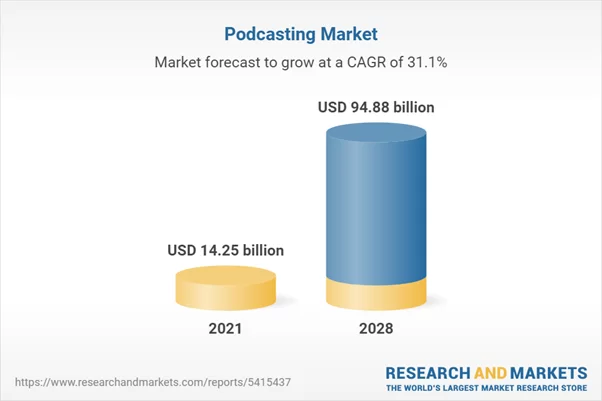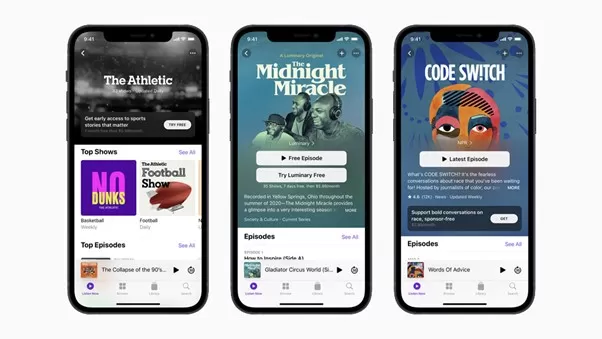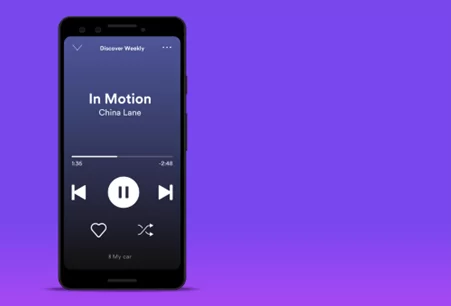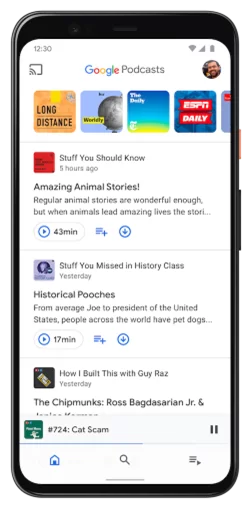Podcasts already existed before the coinage of the term. It was previously known as audio blogs, dating back to as early as the 1980s. It took over 20 years for this new medium to gain traction due to the lack of distribution channels. It was not until 2004 that podcasts came into reality by Adam Curry – a mid-80s former video jockey for MTV and Dave Winner – a software developer who coded iPodder.
By leveraging blogging technology to create a new form of shared sound, Adam and Dave enabled people to download digital audio files to iPods. Since then, podcasts have started to grow in popularity. The term was first coined by Ben Hammersly – the Guardians’ journalist. It combines the words iPod and broadcast. In 2005, the New Oxford American Dictionary selected this new coinage as the Word of the Year. That said, its popularity still grew slowly in its early days.
Is this New Era the Golden Age of Podcast?
Until now, podcasts have been around for nearly two decades. However, the industry has only expanded exponentially over the last few years. It is estimated that the global podcasting market size can reach $94.88 billion by 2028.
The boom time of this audio-based listening platform can be attributed to many factors, including
- Personalized content: According to Podcast Insights 2021, more than 2 million podcast channels are active. That means no matter what one’s particular interest is, there are always at least several podcast channels that can fulfill their passion. They can enjoy complete freedom to select their own favorite topics and speakers. It’s totally up to them to personalize their podcasting experience.
- Free of charge (mostly): The popularity of smartphones has skyrocketed in recent years. Fortunately, this electronic device is the only requirement to access the podcasting space. What’s more, a wide selection of popular podcast apps is available for free. Some are already installed on smartphones. Thus, the audience can freely entertain or listen to educational content from millions of global content creators.
- Convenience: Listening to a podcast is a hands-free and eyes-free experience. It requires no reading and not much energy. It liberates the audience from time and place. In other words, they can listen on the go. They can enjoy their favorite episode while doing other activities that require less attention, such as doing laundry, going to the gym, driving to work, walking, etc.
- High-level interactivity: The most enjoyable part of the podcasting experience is anyone can be a broadcaster. Any ordinary person with knowledge and experiences in a specific field can share their stories with the masses via audio recordings. These real-life stories are based on personal experiences. As a result, it can stir the audience’s emotions and touch their hearts.
Why UX/UI Design is so Important in Building Popular Podcast Apps?
User experience (UX) and user interface (UI) are interchangeable terms. Yet, they are not the same. There are ongoing debates about the differences between them. Simply put, UX design focuses on the effectiveness of user experiences and their journey. In other words, how well users can interact with the app without obstacles. Meanwhile, UI is concerned with how things look. It’s about the aesthetic factors such as high-resolution graphics, consistent layout, and ease of use.
A well-designed UX/UI is rooted in in-depth research. Through research insights, developers can gain a deep understanding of their target users through a series of questions such as:
- Who are their target users? 50% of podcast listeners, let’s say, are youth between the ages of 12-34.
- What are user pain points/ frustrations? Podcast listeners, for example, have difficulty finding topics that interest them. A counter-intuitive app may also cause them to feel lost.
- What are things developers can do to solve user problems? UX/UI design may need to be more user-friendly if users feel lost when using a podcast app. A mix of UX and UI design should create a more intuitive space for users to browse and navigate.
A delightful experience is a key to any successful business. And, podcast industry is not an exception. Focusing on a customer-centric approach will attract and engage podcast listeners and keep them returning to use the app daily. Thus, UX/UI design plays a decisive role in developing popular podcast apps.
3 Widely-Used Podcast Apps: How are their UI UX Designs?
According to Buzzsprout Platform Stats, the top five as of June 2022 include Apple Podcasts, Spotify, Web Browser, Google Podcasts, and Cast Box. In this article, let’s dive into the strong points of UX/UI design that make Apple Podcasts, Spotify, and Google Podcasts widespread.
#1 Apple Podcasts
There are 39.4% of podcast audiences use Apple Podcasts in June 2022, according to Buzzsprout. This is an amazing number compared to other similar apps. One of the biggest reasons that make it one of the most popular podcast apps is its easy access. Apple Podcasts is already available on every iOS device. It is integrated with Siri and synced with iTunes. In addition, it is one of the best ways to listen to podcasts on Apple Watch when being away from the iPhone. For those who want to enjoy the entire Apple experience, Apple Podcasts is the easiest and most convenient choice.
#2 Spotify
Some analysts believe that Spotify might be close to overtaking Apple Podcasts in the next few years. There are three strong points that make Spotify second only to Apple Podcasts (26,4%):
- Intuitive user interface: The harmonious combination of size, color, contrast, alignment, and other visual elements has created a consistent design language and good hierarchy for Spotify. This intuitive UI provides users with clear guidance on what they should pay attention to. As a result, it’s quite easy to navigate through the app.
- Dark theme is one of the biggest trends in UX/UI design in recent years. However, Spotify has already applied this low-light user interface to the app since its inception. This feature differentiates the app from other rivals.
- Car view mode is also a unique UX/UI design of Spotify. Users can toggle the mode manually. When it is enabled, it automatically connects to car’s Bluetooth while driving. All visual elements such as background images are removed from the screen to highlight control buttons.
#3 Google Podcasts
Google Podcasts doesn’t gain a pre-installed advantage like Apple Podcasts. It also doesn’t own unique features like Spotify. That’s why among the three applications mentioned in this article, Google Podcasts has the lowest user rate (2.5%). That is to say, this app still distinguishes itself from other competitors by small notable features such as:
- Ad-free user experience;
- Great recommendations for users;
- Simple, gorgeous, and intuitive user interface.
Final Words
There is no such thing as a perfect application. Each one is developed to solve a set of specific audience paint points. Thus, there will be always room for enhancing the audience’s podcasting experience in every app, even if they are the most popular podcast apps.













